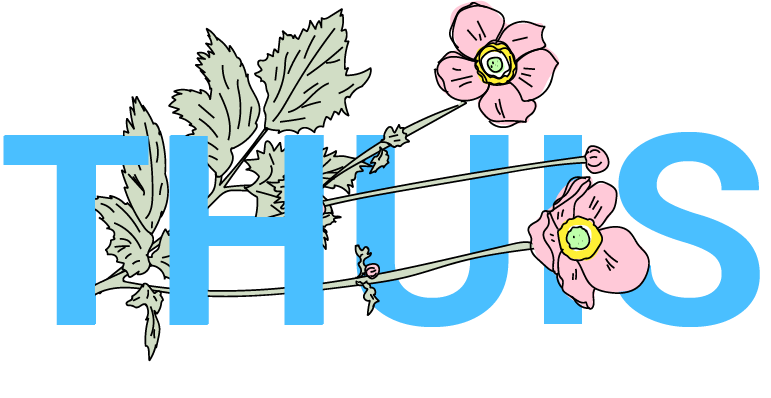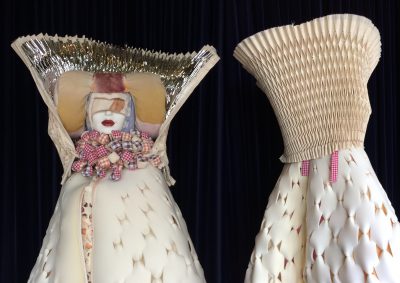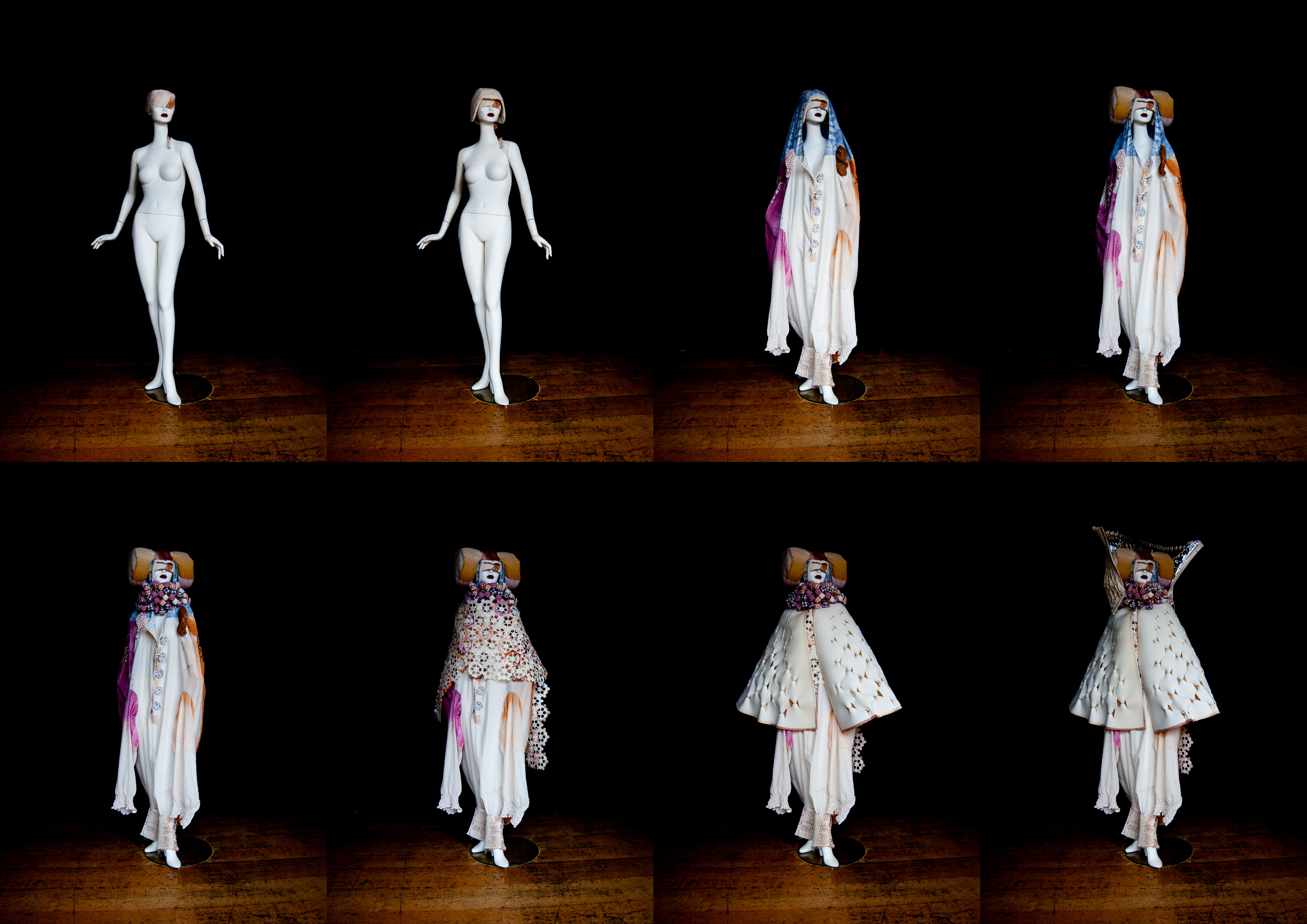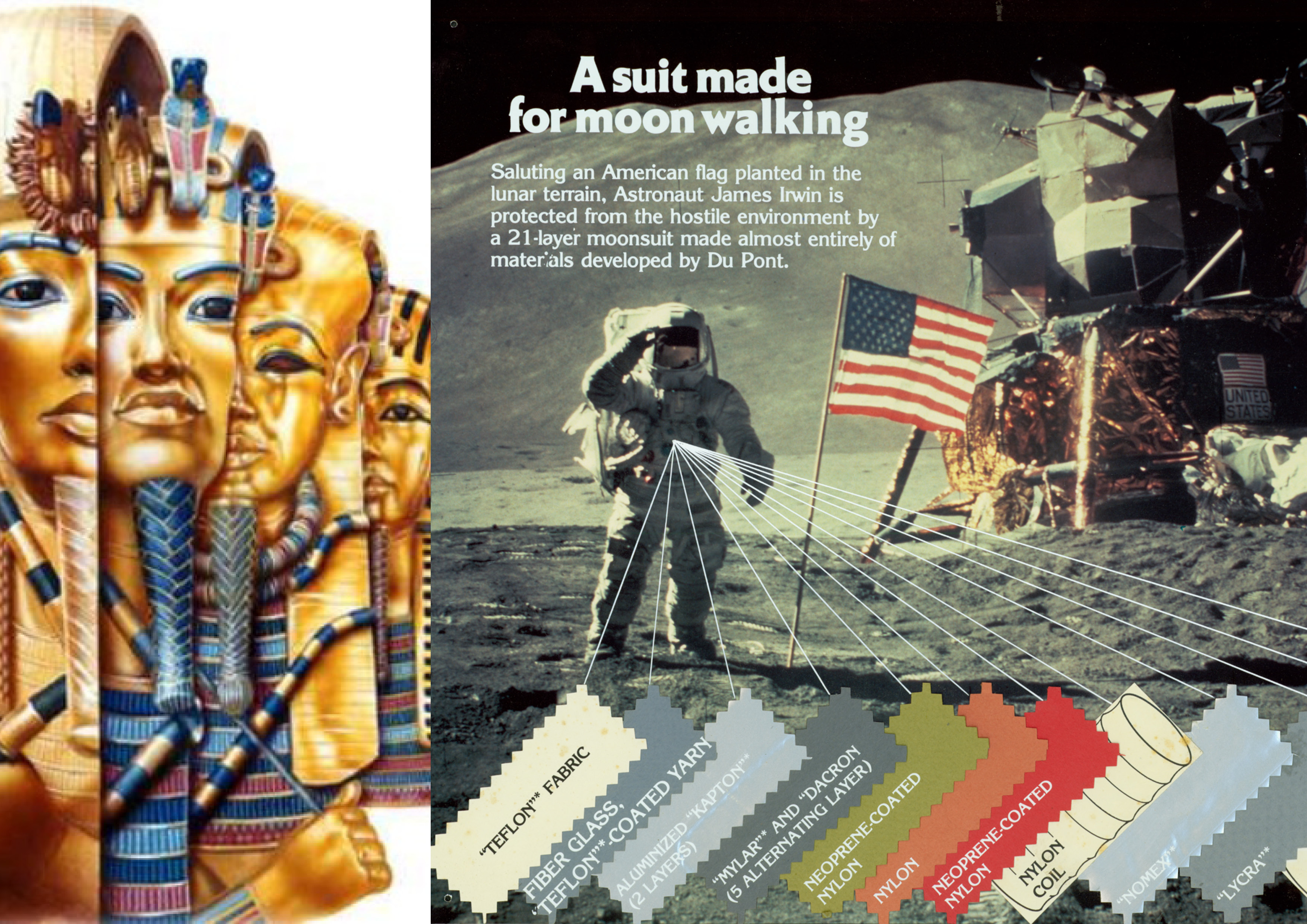• The speculative art project Sleep Warrior (2019) is researching how global warming can be fought through sleep. By sleeping longer, people save energy for the planet while gaining energy for themselves, making it easier to face the challenges of climate change.
• The bedroom is converted into a wearable bed. It is sustainable because it uses less resources and produces less waste. It is easily repairable because of its modular design. And it is perfect for sleeping under nomadic circumstances, should global warming prove to be unstoppable and force future generations to migrate continuously.
Background | 50% of the people in so-called ‘industrialized’ societies are sleep deprived. 25% have serious sleep problems. Meanwhile the planet’s biosphere has become sick too. What is disturbing our sleep is also ruining our living planet. The capitalist fossil fuel-based 24-7 economy results in too much pollution and too many distruptions in the earth’s ecology. The Sleep Warrior is a celestial being who helps us to deal with this. She lovingly helps us to reverse climate change by embracing sleep instead of fighting it. She makes us turn off our screens and turn off the lights. Turn off and turn in. And so she inspires us to dream of a cleaner world and actually build it.
NL
• Het speculatieve kunstproject Sleep Warrior (2019) onderzoekt hoe de opwarming van de aarde met slaap kan worden bestreden. Door langer te slapen besparen mensen energie voor de planeet terwijl ze meer energie creëren voor zichzelf. Beter uitgerust kunnen ze de lastige uitdagingen van klimaatverandering beter het hoofd bieden.
• De slaapkamer is omgebouwd tot een draagbaar bed. Dit is duurzaam omdat het minder materialen en energiebronnen verbruikt en minder afval produceert. Het is gemakkelijk te herstellen vanwege het modulaire ontwerp. En het is ideaal voor slapen onder nomadische omstandigheden, mocht de opwarming van de aarde niet te stoppen zijn en toekomstige generaties voortdurend moeten migreren.
Achtergrond | 50% van de mensen in de ‘geïndustrialiseerde’ samenleving lijdt aan slaapgebrek. 25% heeft zelfs ernstige slaapproblemen. Ondertussen is ook de biosfeer van de planeet ziek geworden. Wat onze slaap verstoort, verpest ook onze levende planeet. De kapitalistische, op fossiele brandstof gebaseerde 24-7-economie resulteert in te veel vervuiling en te veel verstoringen in de ecologie van de aarde. De Sleep Warrior is een hemels wezen dat ons helpt hiermee om te gaan. Ze helpt ons klimaatverandering te stoppen door de slaap te omarmen in plaats van ertegen te vechten. Ze laat ons de schermen uitzetten en de lichten uitdoen. En zo inspireert ze ons om te dromen van een schonere wereld, en deze ook echt te realiseren.
Background images in video by Moebius/Jean Giraud. Background music by TalkTalk/Mark Hollis.
The Sleep Warrior’s Garments
The Sleep Warrior is dressed in a full body suit consisting of eight nested layers, including a mattress and a modular blanket.
Made of natural and second-hand materials and dyed with natural pigments (plant-based, bacteria). Traditional embroidery crafts are combined with digital design. Old technologies (the needle) are paired with new (the lasercutter). The wearable bed produces zero waste because of the smart, digitally designed cuts of the fabrics. It is sustainable because the different parts and modules can easily be mended, repaired or replaced.
But First Some Words on Nesting
While I was working on the design for a full body suit for sleeping I came up with the idea of ‘nesting’. Not only because the word ‘nest’ reminds me of ‘bed’ and ‘rest’, but also because the full body suits I studied are in fact ‘nested designs’ with many different layers. I especially looked into astronaut’s suits (mainly for the technology) and pharaoh’s tombs (mainly for the storytelling). Both envelop the body of the ‘wearer’ in distinct different layers, beginning close and soft to the body and ending in some sort of hardened outward shell (respectively helmet and sarcophagus). The closer to the body, the holier the design.
Darkness: Eye Pad
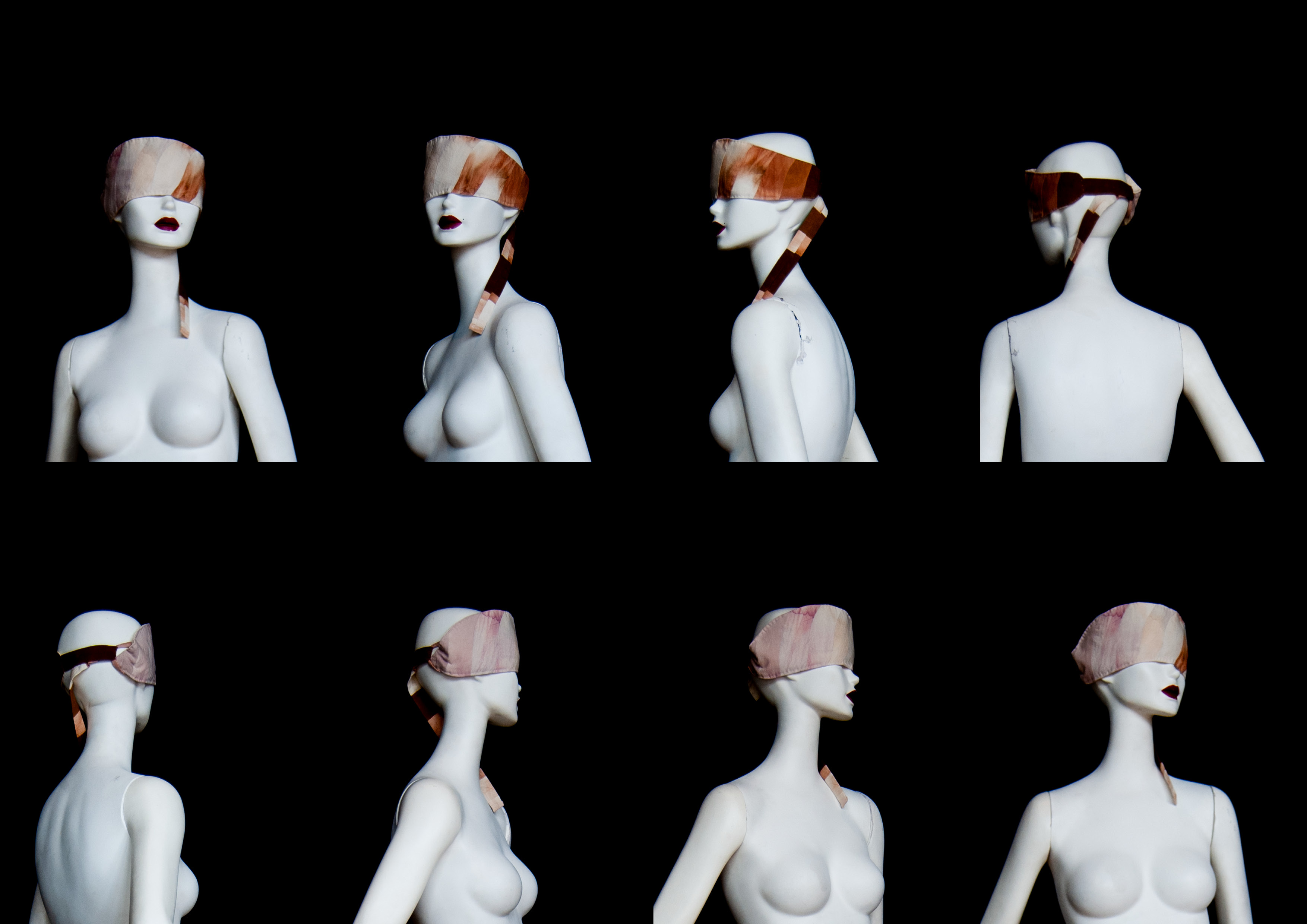 The biological clock or ‘circadian rhythm’ is directly influenced by light. Sleep scientist therefore recommend to install dark or darkening curtains in the bedroom. Surely this will take yards and yards of heavy fabric. More sustainable, cheaper and as effective is this Eye Pad, which covers the eyes and looks pretty too. One-celled organisms that also have circadian rhythms inspired the shape of the Eye Pad. (One of the very first adaptations of the very first living organisms on earth was the circadian rhythm). The Eye Pad is made of scraps of naturally dyed cotton left over from the full body sheet. Gradients in colour symbolize the recurring rhythm of dusk and dawn. The Eye Pad has a long strap to fasten it comfortably around the head. It has three layers, including a padding of soft filling. It is plainly quilted around the edges.
The biological clock or ‘circadian rhythm’ is directly influenced by light. Sleep scientist therefore recommend to install dark or darkening curtains in the bedroom. Surely this will take yards and yards of heavy fabric. More sustainable, cheaper and as effective is this Eye Pad, which covers the eyes and looks pretty too. One-celled organisms that also have circadian rhythms inspired the shape of the Eye Pad. (One of the very first adaptations of the very first living organisms on earth was the circadian rhythm). The Eye Pad is made of scraps of naturally dyed cotton left over from the full body sheet. Gradients in colour symbolize the recurring rhythm of dusk and dawn. The Eye Pad has a long strap to fasten it comfortably around the head. It has three layers, including a padding of soft filling. It is plainly quilted around the edges.
Insulation: Sleep Cap
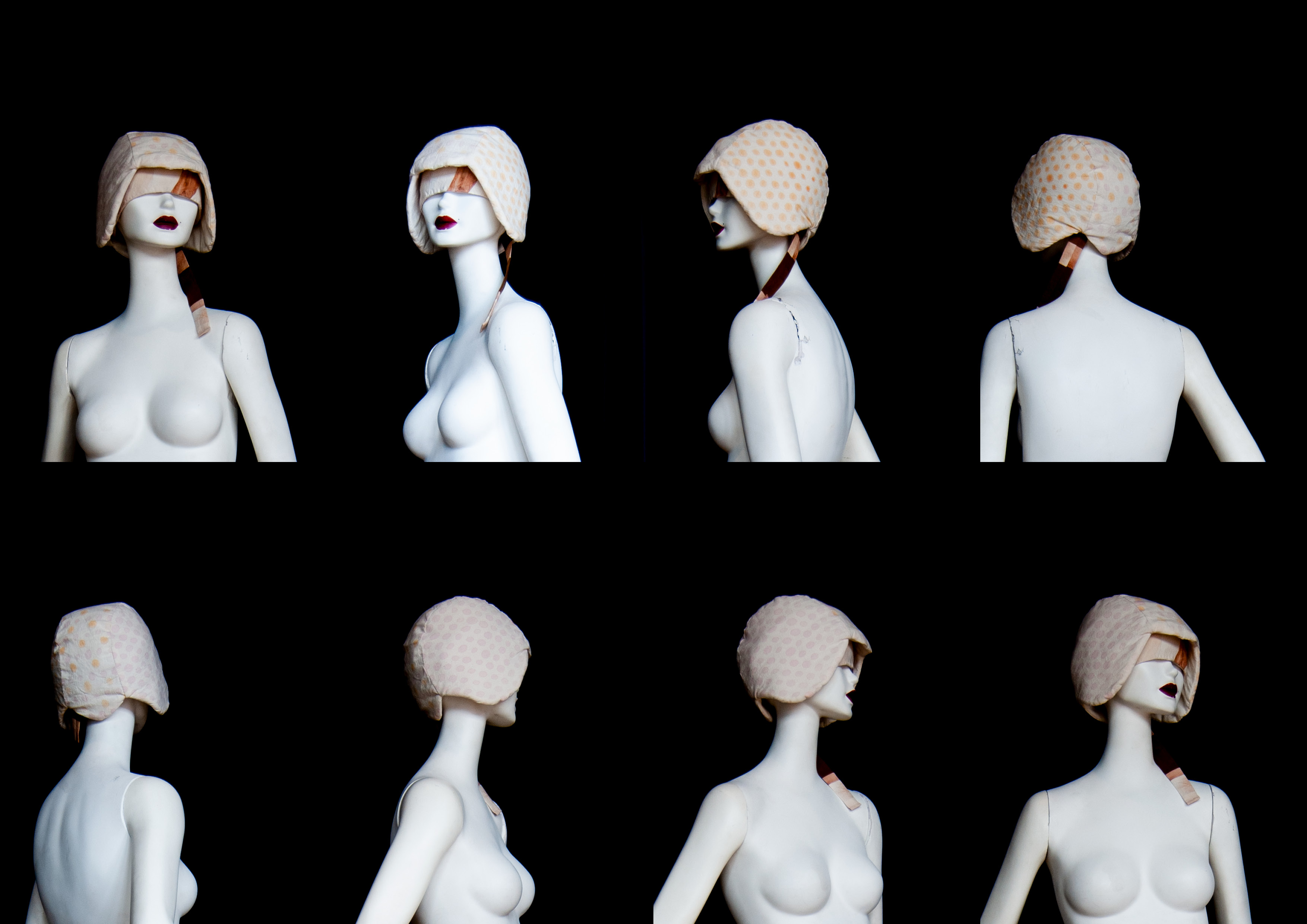 Before central heating and insulated glazing people had to do their best to keep warm in bed. Also they had less opportunity to wash and groom their hair because generally they could only take one bath per week. So they wore nightcaps to preserve body heat and hairdos. Modern day people have the luxury of big bedrooms and lush everyday showers. But it costs energy to heat those big rooms and it costs energy to heat those gallons of running tapwater. The Sleep Cap adds an old solution to the new solution of being eco-friendly. It makes it possible to turn down the heat and keep your hair in shape a little while longer so you need fewer showers. The Sleep Cap is custom-made for the head of the wearer. Its pattern is designed in Adobe Illustrator and sown by hand. It is dyed with natural pigments extracted with ethanol, hibiscus for pink, annatto for yellow. It has three layers, one of which is a soft padding in between.
Before central heating and insulated glazing people had to do their best to keep warm in bed. Also they had less opportunity to wash and groom their hair because generally they could only take one bath per week. So they wore nightcaps to preserve body heat and hairdos. Modern day people have the luxury of big bedrooms and lush everyday showers. But it costs energy to heat those big rooms and it costs energy to heat those gallons of running tapwater. The Sleep Cap adds an old solution to the new solution of being eco-friendly. It makes it possible to turn down the heat and keep your hair in shape a little while longer so you need fewer showers. The Sleep Cap is custom-made for the head of the wearer. Its pattern is designed in Adobe Illustrator and sown by hand. It is dyed with natural pigments extracted with ethanol, hibiscus for pink, annatto for yellow. It has three layers, one of which is a soft padding in between.
Sacredness: Full Body Sheet
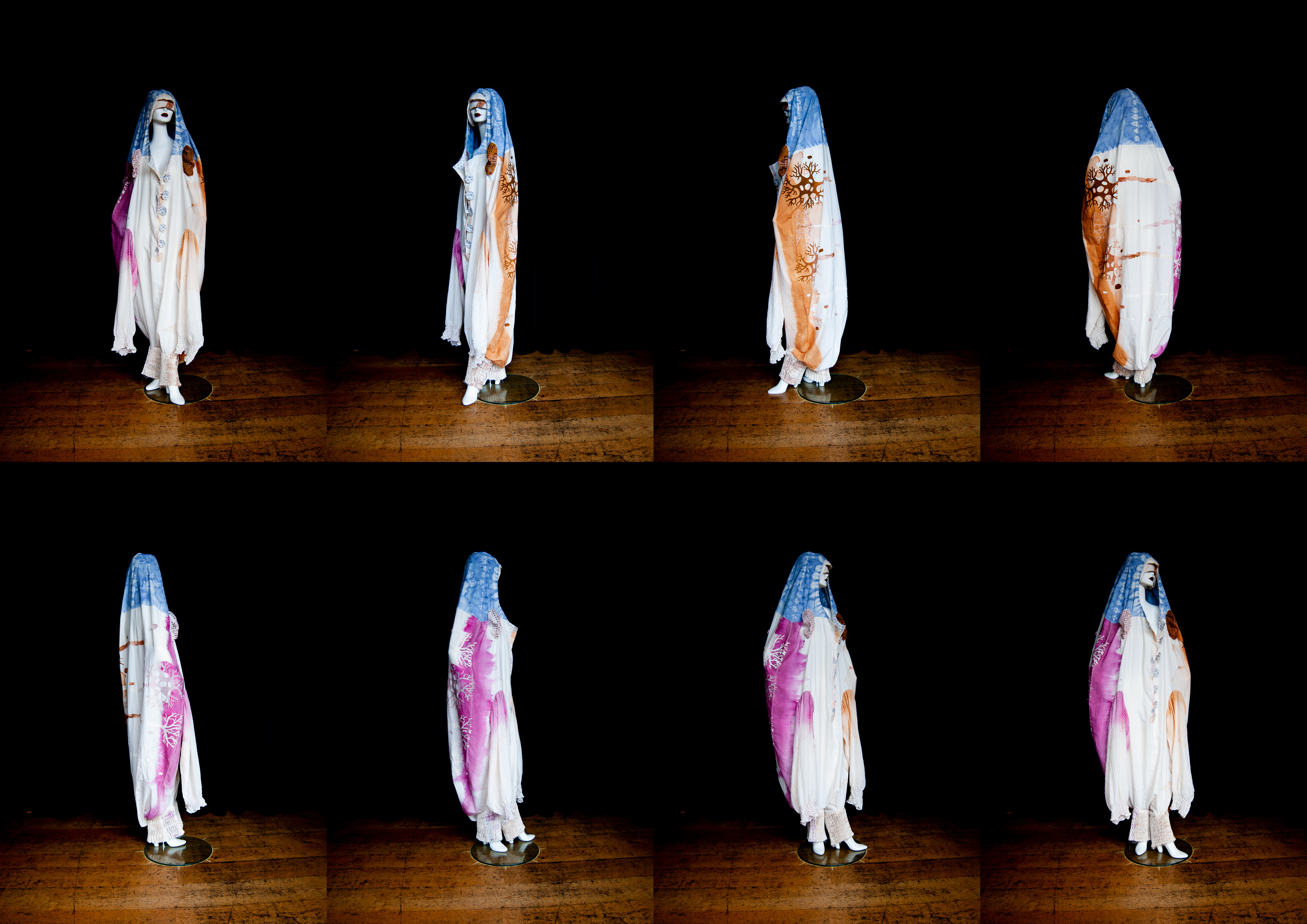 The full body sheet is the showpiece of The Sleep Warrior, even though it is hardly visible when The Sleep warrior is dressed in full array. It symbolizes the sacredness of the body and its intimate relation with textiles. Textiles are the first and last need of a person. Textiles are sacraments. Cloth is the first thing a baby receives when she is born. It is the last thing a person shrouds when he dies. The bed is our tender night temple made of fabrics. It is the delicate space of the sleeping person, who is completely vulnerable, completely recipient, and completely innocent. Bed sheets are a private cosmos in themselves and yet they are standardized, mass-produced, generic, square and impersonal. The Sleep Warrior’s full body sheet is custom-made for the wearer. It is egg-shaped and fully encloses the body. Openings for the face, arms and feet are positioned in such a way to accommodate the horizontal body in foetal position. It is dyed with the natural pigments of onion peels and hibiscus. Sleep scientists recommend people to sleep on their left sides to enhance healthy body processes. The left side of the body sheet is therefore dyed with onion peels (onions grow in the ground, they are ‘rooted’); the right side is dyed with hibiscus (the flowers grow in the air). The dyes are soaked up by the raw cotton as its bottom part is dipped in the dye bath and left overnight. This method produces gradients symbolizing dusk and dawn. Also it symbolizes how sleep is a gradual process; sleep ‘overtakes’ us like soaked-up dye ‘overtakes’ a fabric. The hood is dyed bright blue with bacteria to symbolize the open air, the perfect backdrop for dreaming. Lasercut ornaments in the shape of branched nerve cells (or ‘roots’) connecting the left and right sides of the sheet. The fabric of the arm and foot sleeves is manipulated with smock-embroidery, which makes it elastic and easier to use when drowsy. The soft buttons are made of leftover fabric decorated with ethanol-extracted bacteria-dye. Computational designed parametric airholes are stitched in at the shoulders to make it easier for the sleeping person to breath fresh air.
The full body sheet is the showpiece of The Sleep Warrior, even though it is hardly visible when The Sleep warrior is dressed in full array. It symbolizes the sacredness of the body and its intimate relation with textiles. Textiles are the first and last need of a person. Textiles are sacraments. Cloth is the first thing a baby receives when she is born. It is the last thing a person shrouds when he dies. The bed is our tender night temple made of fabrics. It is the delicate space of the sleeping person, who is completely vulnerable, completely recipient, and completely innocent. Bed sheets are a private cosmos in themselves and yet they are standardized, mass-produced, generic, square and impersonal. The Sleep Warrior’s full body sheet is custom-made for the wearer. It is egg-shaped and fully encloses the body. Openings for the face, arms and feet are positioned in such a way to accommodate the horizontal body in foetal position. It is dyed with the natural pigments of onion peels and hibiscus. Sleep scientists recommend people to sleep on their left sides to enhance healthy body processes. The left side of the body sheet is therefore dyed with onion peels (onions grow in the ground, they are ‘rooted’); the right side is dyed with hibiscus (the flowers grow in the air). The dyes are soaked up by the raw cotton as its bottom part is dipped in the dye bath and left overnight. This method produces gradients symbolizing dusk and dawn. Also it symbolizes how sleep is a gradual process; sleep ‘overtakes’ us like soaked-up dye ‘overtakes’ a fabric. The hood is dyed bright blue with bacteria to symbolize the open air, the perfect backdrop for dreaming. Lasercut ornaments in the shape of branched nerve cells (or ‘roots’) connecting the left and right sides of the sheet. The fabric of the arm and foot sleeves is manipulated with smock-embroidery, which makes it elastic and easier to use when drowsy. The soft buttons are made of leftover fabric decorated with ethanol-extracted bacteria-dye. Computational designed parametric airholes are stitched in at the shoulders to make it easier for the sleeping person to breath fresh air.
Silence: Soft Bonnet
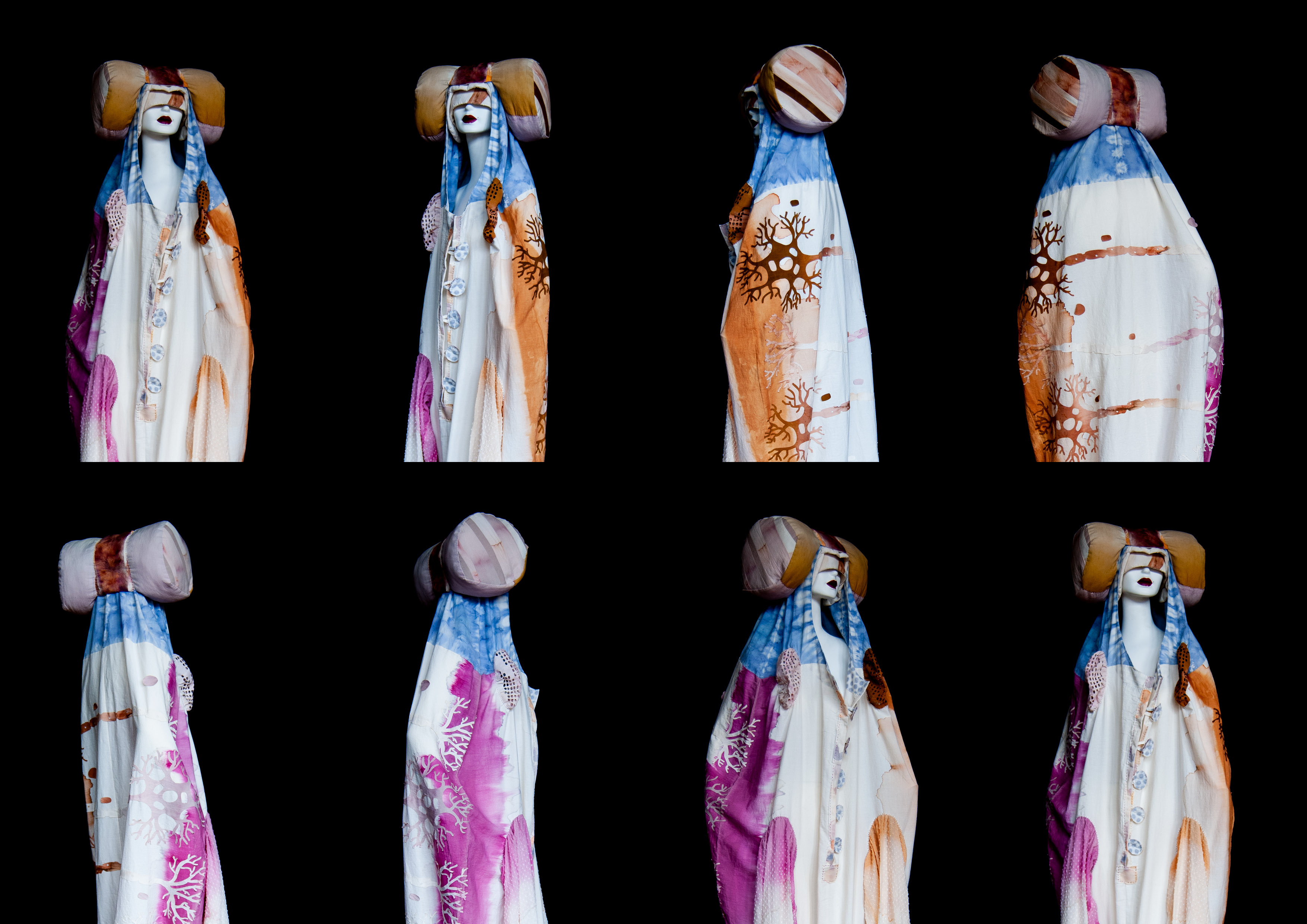 Noise pollution is sleep’s most notorious public enemy. Scientists of the World Health Organisation studying the consequences of intensive air traffic around large airports (like Schiphol near Amsterdam) have discovered that noise pollution disrupts sleep and demonstrably causes a decline in physical and mental health. But noise is very hard to battle. Humans have no earlids and as it is very expensive and elaborate to sound-insulate rooms, using earplugs or other hearing protections can prove to be very uncomfortable in bed. The Sleep Warrior’s Soft Bonnet muffles sound while serving as a pillow at the same time. It provides the wearer with a silent, calm, and almost meditative surrounding. It is custom-made from leftover scraps of fabric used for the body sheet. Some parts of the bonnet are dyed with ethanol-extracted pigments of Brazilwood. It uses the same pattern as the Sleep Cap, extended with strips of fabric to form the pads. The pads are filled with leftover fabric and light cushion fibres. A wool fibre could also regulate temperature and humidity. A heavy filling of kapok or buckwheat hulls could be suitable for people who are restless during sleep: the heaviness of the bonnet would prevent them from turning and tossing.
Noise pollution is sleep’s most notorious public enemy. Scientists of the World Health Organisation studying the consequences of intensive air traffic around large airports (like Schiphol near Amsterdam) have discovered that noise pollution disrupts sleep and demonstrably causes a decline in physical and mental health. But noise is very hard to battle. Humans have no earlids and as it is very expensive and elaborate to sound-insulate rooms, using earplugs or other hearing protections can prove to be very uncomfortable in bed. The Sleep Warrior’s Soft Bonnet muffles sound while serving as a pillow at the same time. It provides the wearer with a silent, calm, and almost meditative surrounding. It is custom-made from leftover scraps of fabric used for the body sheet. Some parts of the bonnet are dyed with ethanol-extracted pigments of Brazilwood. It uses the same pattern as the Sleep Cap, extended with strips of fabric to form the pads. The pads are filled with leftover fabric and light cushion fibres. A wool fibre could also regulate temperature and humidity. A heavy filling of kapok or buckwheat hulls could be suitable for people who are restless during sleep: the heaviness of the bonnet would prevent them from turning and tossing.
Support: Neck Pillow
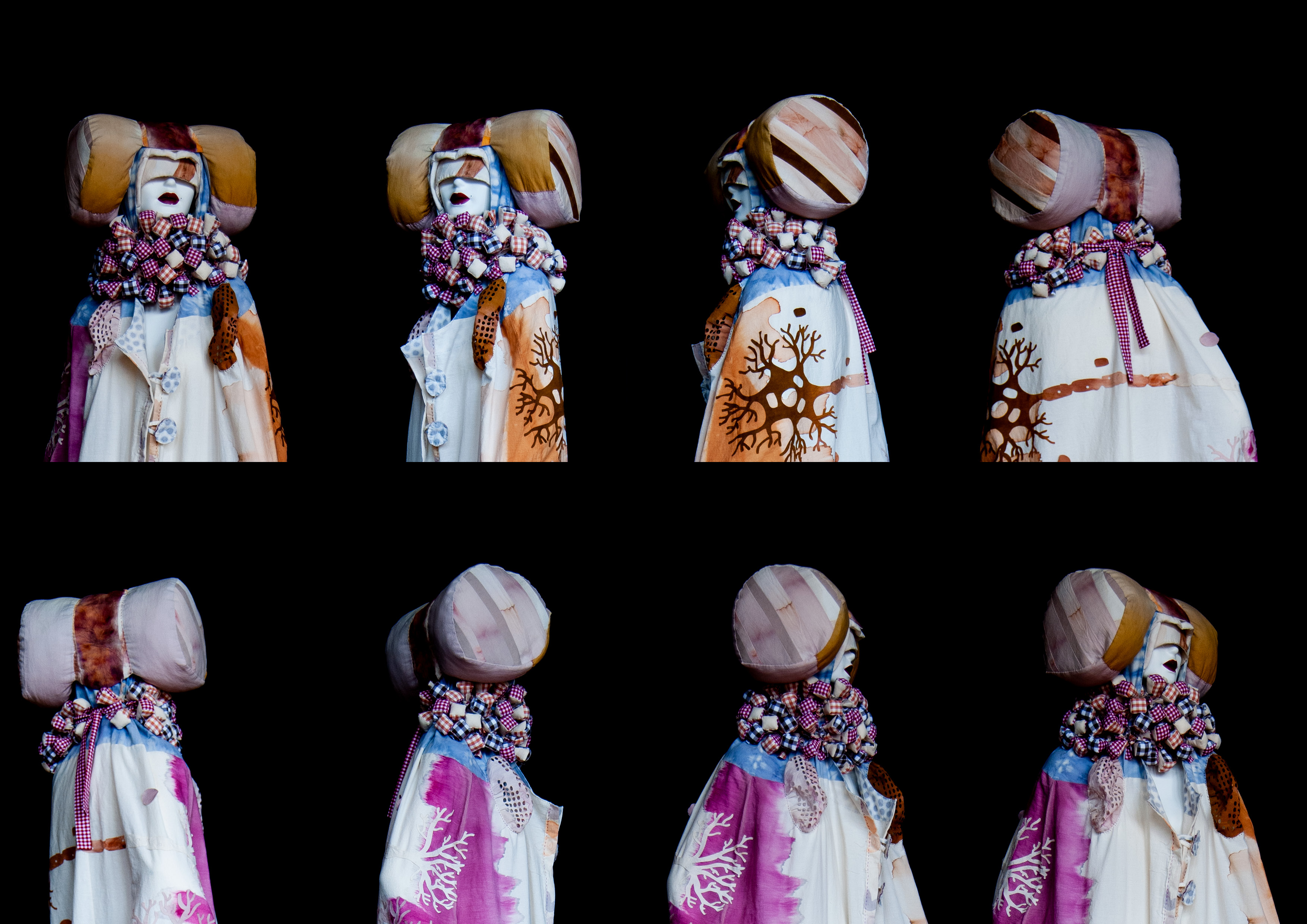 In my biased opinion every bed should have a handmade quilt. Quilts are heritage; they are unique, personal, homely, and hardwearing. If made smartly, quilts are very eco-friendly, the perfect fit for the ‘circular economy’ of using, re-using, mending, repairing and recycling. The Sleep Warrior’s Neck Pillow is an experiment in 3-D patchwork, meant to create a quilt that could both serve as a heavy cover on top and a pleasing mattress below. The 3-D patchwork modules are made of 100% cotton in a typically Dutch woven plaid pattern. The modules are designed in Rhino and cut zero waste in the lasercutter. Next they are sewn together on the machine, filled with soft fibres and tied together by knotting. I intended the Neck Pillow to be The Sleep Warrior’s actual wearable mattress. It would likely function very well as such and be quite soft and supportive where it should be. But to make the 3-D patchwork modules is very, very, VERY time-consuming. I had to downsize the project and made the modules into this Neck Pillow instead. It forms after the body and is in fact more supportive and comfy than the inflatable neck pillows you can buy at airports.
In my biased opinion every bed should have a handmade quilt. Quilts are heritage; they are unique, personal, homely, and hardwearing. If made smartly, quilts are very eco-friendly, the perfect fit for the ‘circular economy’ of using, re-using, mending, repairing and recycling. The Sleep Warrior’s Neck Pillow is an experiment in 3-D patchwork, meant to create a quilt that could both serve as a heavy cover on top and a pleasing mattress below. The 3-D patchwork modules are made of 100% cotton in a typically Dutch woven plaid pattern. The modules are designed in Rhino and cut zero waste in the lasercutter. Next they are sewn together on the machine, filled with soft fibres and tied together by knotting. I intended the Neck Pillow to be The Sleep Warrior’s actual wearable mattress. It would likely function very well as such and be quite soft and supportive where it should be. But to make the 3-D patchwork modules is very, very, VERY time-consuming. I had to downsize the project and made the modules into this Neck Pillow instead. It forms after the body and is in fact more supportive and comfy than the inflatable neck pillows you can buy at airports.
Temperature: Modular Blanket
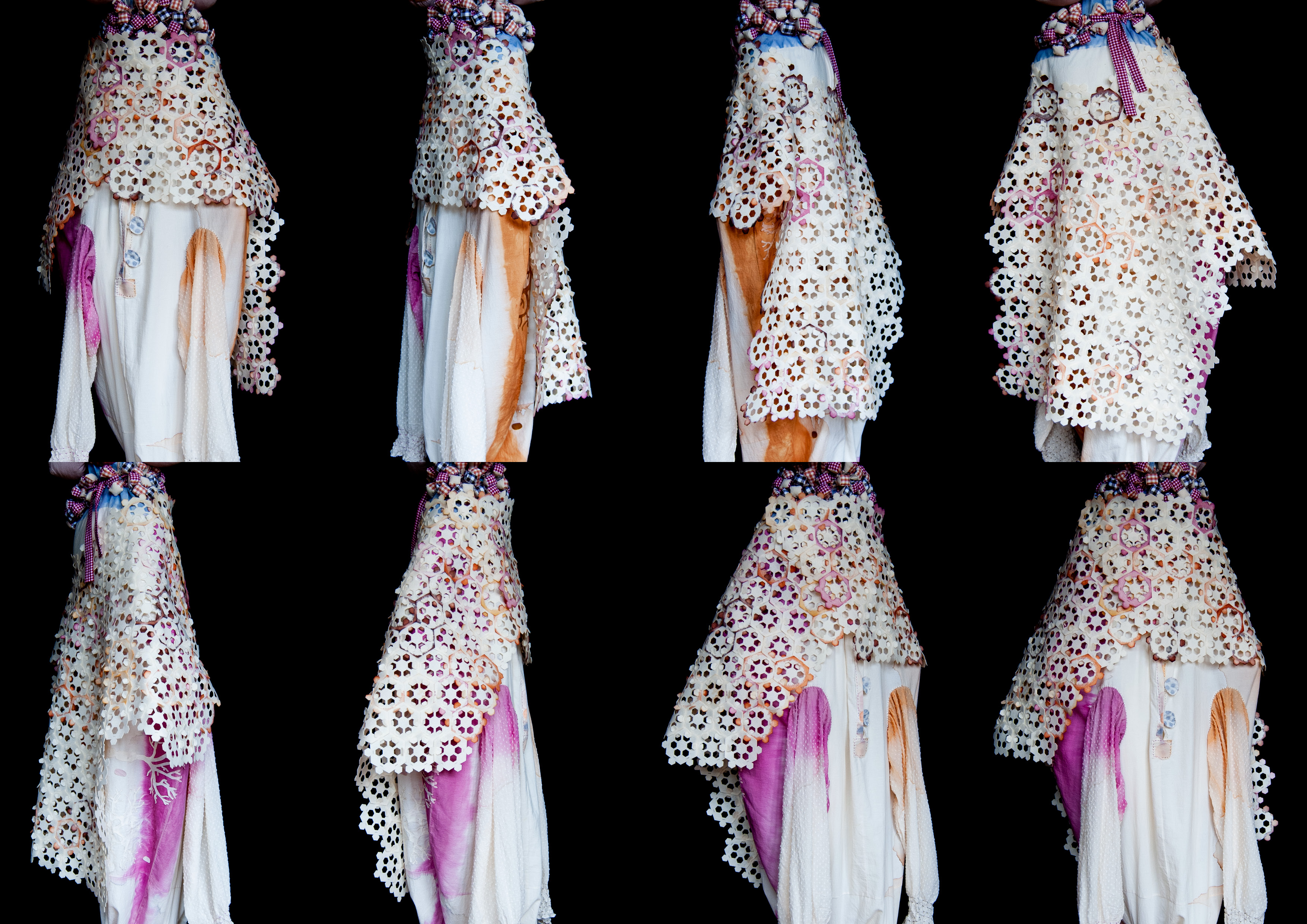 To sleep well a person needs temperature regulation. Too hot or too cold will interrupt the sleep cycle. This modular blanket can provide both coolness and warmth, depending on how the blanket is folded over the body. One layer (so no folds) cools because of the holes in the modules; two layers (so folded on top of each other) close up the holes and provide warmth. The modular blanket for The Sleep Warrior is interlocked without stitches and so can take any wished-for size and shape. The module is based on the hexagon, a classic patchwork polygon that is rather elaborate to use. (In traditional patchwork hexagon shapes need to be folded over cardboard templates and hand stitched together.) Each module has six flounces and six slots. Pulling the flounces through the slots with tweezers assembles the modules. The modules are designed in Adobe Illustrator and imported into Rhino to make a zero waste pattern for the lasercutter. The modules are cut from 2 mm crème felt. After cutting the flounces are dipped in hot water-extracted natural dyes (avocado skins for brown, hibiscus flowers for pink, annotto seeds for yellow, onion peels for orange). The leftovers are turned into modules as well (but for another interlocking project).
To sleep well a person needs temperature regulation. Too hot or too cold will interrupt the sleep cycle. This modular blanket can provide both coolness and warmth, depending on how the blanket is folded over the body. One layer (so no folds) cools because of the holes in the modules; two layers (so folded on top of each other) close up the holes and provide warmth. The modular blanket for The Sleep Warrior is interlocked without stitches and so can take any wished-for size and shape. The module is based on the hexagon, a classic patchwork polygon that is rather elaborate to use. (In traditional patchwork hexagon shapes need to be folded over cardboard templates and hand stitched together.) Each module has six flounces and six slots. Pulling the flounces through the slots with tweezers assembles the modules. The modules are designed in Adobe Illustrator and imported into Rhino to make a zero waste pattern for the lasercutter. The modules are cut from 2 mm crème felt. After cutting the flounces are dipped in hot water-extracted natural dyes (avocado skins for brown, hibiscus flowers for pink, annotto seeds for yellow, onion peels for orange). The leftovers are turned into modules as well (but for another interlocking project).
Comfort: Wearable Mattress
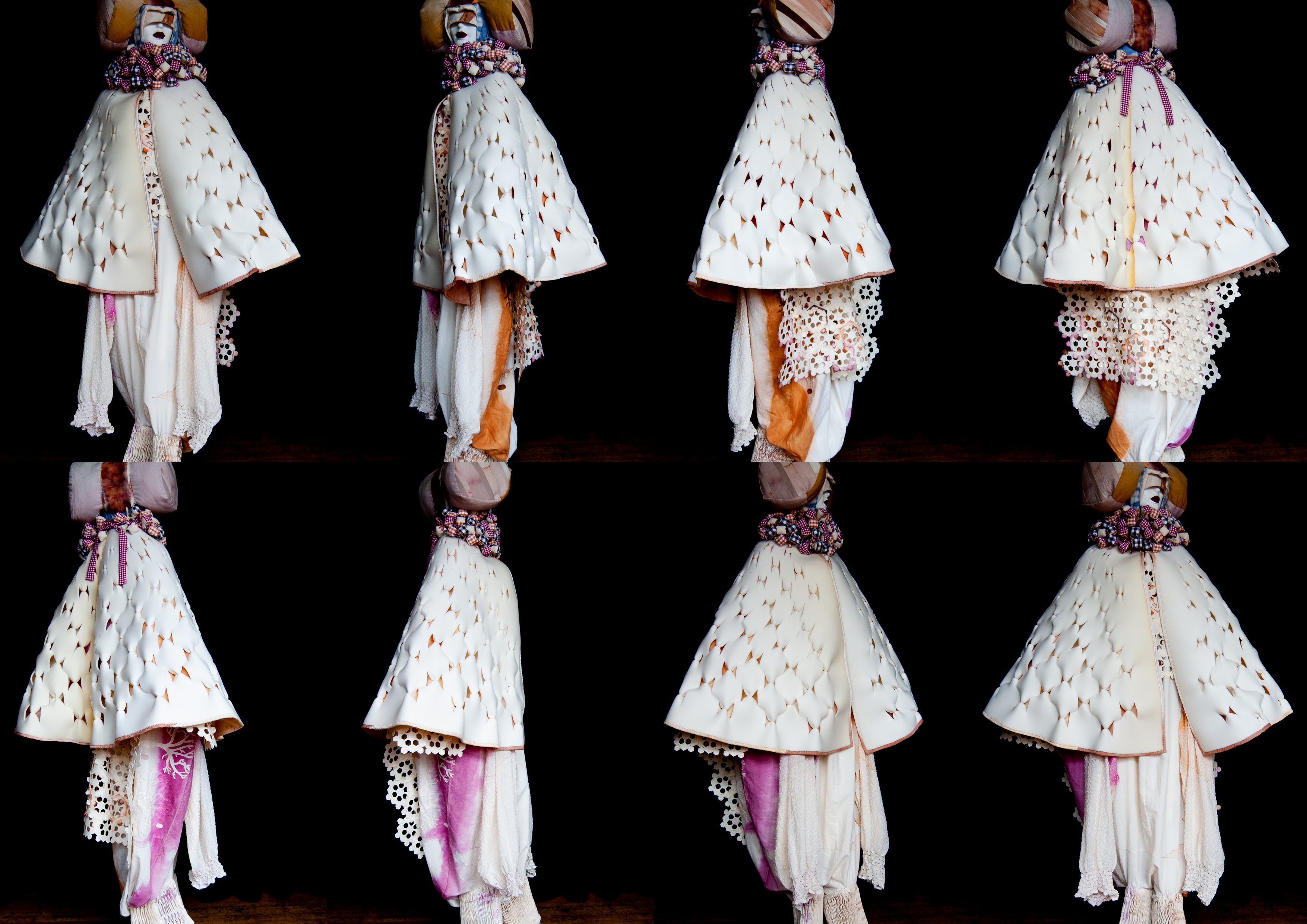 If you think about it, a mattress is actually huge in size. In fact, 60% of a mattress is not (indeed not ever) used by the sleeping person. This is also true for double-sized matrasses for couples. Even lovemaking or giving birth does not require such a large surface. Just think of the resources, commodities, energy and waste that could be spared if mattresses and beds were smaller and specifically designed to perfectly match the body. The Sleep Warrior’s wearable mattress is both cloak and mat. It is made from a secondhand piece of 4 mm foam found in the thrift store. Using a larger piece of foam could make a larger mattress. For extra padding the cape/mattress is made thicker by slashing the material and pulling it together with yarns. Since foam is a polyethylene plastic it cannot be cut in the lasercutter (it melts). It must be cut by hand. For the design I therefore created ‘non-digital parametrics’. This is rather simple, no Grasshopper, no math: it only takes a pencil, a carton template, a pin and calculated measurements. The wearable mattress is lined with raw cotton dip-dyed in hibiscus and onion peels. The large button at the neckline (not visible in the picture) is an heirloom from the grandmother of an ex-boyfriend.
If you think about it, a mattress is actually huge in size. In fact, 60% of a mattress is not (indeed not ever) used by the sleeping person. This is also true for double-sized matrasses for couples. Even lovemaking or giving birth does not require such a large surface. Just think of the resources, commodities, energy and waste that could be spared if mattresses and beds were smaller and specifically designed to perfectly match the body. The Sleep Warrior’s wearable mattress is both cloak and mat. It is made from a secondhand piece of 4 mm foam found in the thrift store. Using a larger piece of foam could make a larger mattress. For extra padding the cape/mattress is made thicker by slashing the material and pulling it together with yarns. Since foam is a polyethylene plastic it cannot be cut in the lasercutter (it melts). It must be cut by hand. For the design I therefore created ‘non-digital parametrics’. This is rather simple, no Grasshopper, no math: it only takes a pencil, a carton template, a pin and calculated measurements. The wearable mattress is lined with raw cotton dip-dyed in hibiscus and onion peels. The large button at the neckline (not visible in the picture) is an heirloom from the grandmother of an ex-boyfriend.
Protection: Electromagnetic Shield
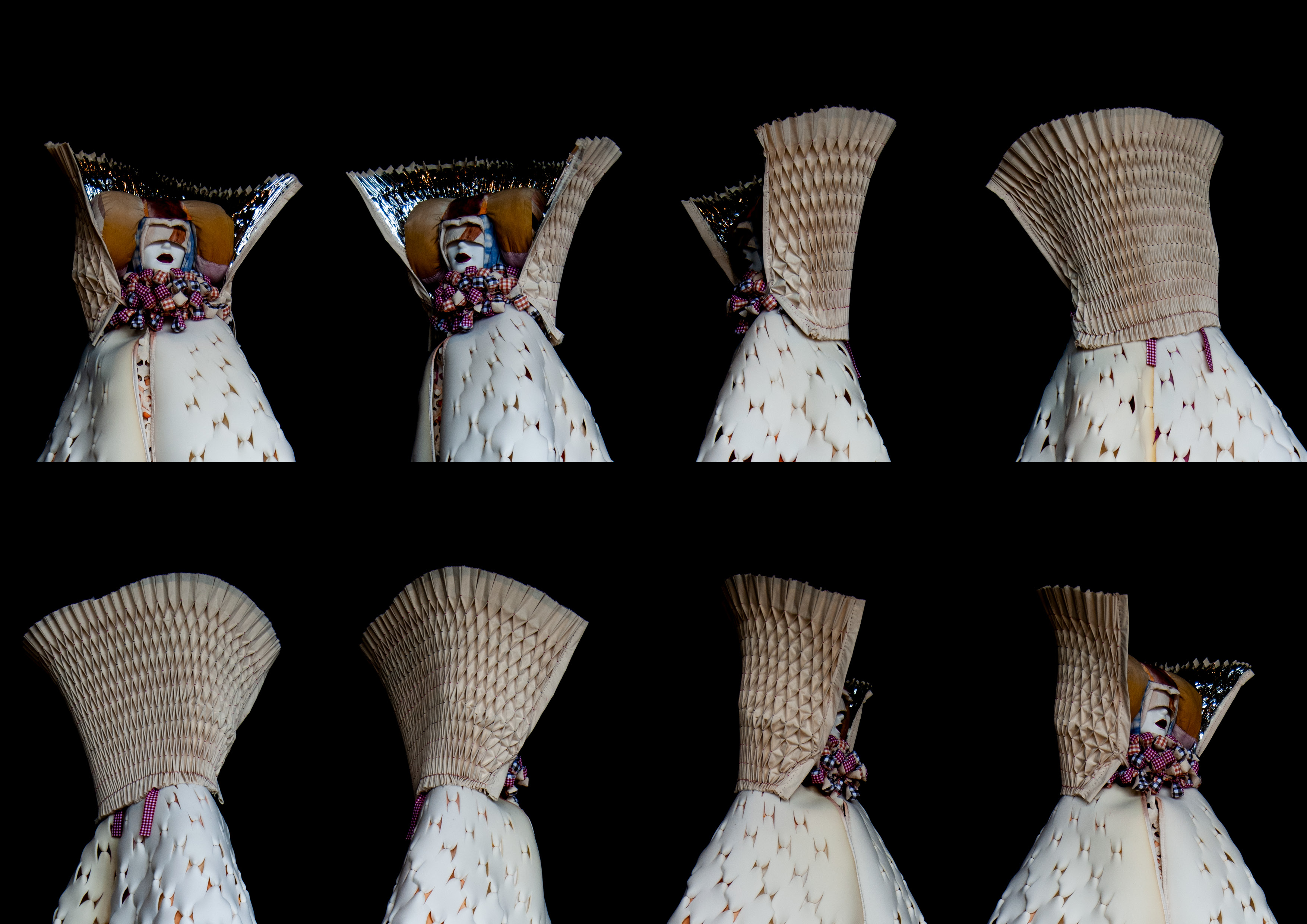 Electrical wires and wireless communication technologies (4G, Wi-Fi) create electromagnetic fields (EMFs) within the home. EMFs may have health hazards. Some studies show that exposure to EMFs may impede the production of melatonin and thereby affect the body’s circadian rhythm. EMF-exposure can undermine sleep cycles and cause ailments and symptoms such as allergies, muscle aches and a weakened immune system. For this reason The Sleep Warrior has no electronics in any of her garments. Sleep and electricity do not go well together. For protection against EMFs special shielding textiles are produced with a metal in the weave (silver, tin, aluminium). These fabrics are rather expensive. The Sleep Warrior wears a budget DIY EMF-shield made of raw cotton and radiator foil. The fabric and foil are merged together with smock-embroidered pleats. The shield is worn as a high collar or put over the head when sleeping. To be honest, this shield is more statement than true protection. Though radiation will not come through the material (I tested with my smartphone), it won’t seal off the body completely, making parts still exposed to EMFs. The best thing to do if you want less EMFs in your bedroom is to remove all electrical devices, leave your laptop, tablet and smartphone outside the bedroom and turn off your Wi-Fi-router at night._
Electrical wires and wireless communication technologies (4G, Wi-Fi) create electromagnetic fields (EMFs) within the home. EMFs may have health hazards. Some studies show that exposure to EMFs may impede the production of melatonin and thereby affect the body’s circadian rhythm. EMF-exposure can undermine sleep cycles and cause ailments and symptoms such as allergies, muscle aches and a weakened immune system. For this reason The Sleep Warrior has no electronics in any of her garments. Sleep and electricity do not go well together. For protection against EMFs special shielding textiles are produced with a metal in the weave (silver, tin, aluminium). These fabrics are rather expensive. The Sleep Warrior wears a budget DIY EMF-shield made of raw cotton and radiator foil. The fabric and foil are merged together with smock-embroidered pleats. The shield is worn as a high collar or put over the head when sleeping. To be honest, this shield is more statement than true protection. Though radiation will not come through the material (I tested with my smartphone), it won’t seal off the body completely, making parts still exposed to EMFs. The best thing to do if you want less EMFs in your bedroom is to remove all electrical devices, leave your laptop, tablet and smartphone outside the bedroom and turn off your Wi-Fi-router at night._
Some Words on Sleep
Why it is so important and why we need more sleep than we take.
Bed Time Science | Just like the scientists who study global warming, the scientists who study sleep unanimously agree that free market capitalism and growth economy have damaging effects. Both conclude that non-stop industrial enterprise disturbs and eventually wrecks biological processes.
No Sleep | With the invention of the light bulb in 1879 society started to move into the direction of our current non-stop outpouring of activity, cumulating in the conduction of round-the-clock operations in almost every sector of the global economy. But humans, as living organisms, need nighttime to recover, re-energize and regenerate both physically and mentally. Light from computers, phones, televisions and LED streetlights all have a negative impact on the body’s biological clock, physical resistance and psychological resilience. Apart from causing fatigue, drowsiness, moodiness, clumsiness and memory loss, a lack of sleep can lead to deadly accidents and a wide range of severe illnesses, from anxiety, depression, obesities and diabetes to cancer, dementia and Alzheimer’s disease. Pain and anguish are experienced more intense. Over the generations a continual decline in sleeping hours even leads to a strongly impaired capacity to memorize, learn and be creative, which are all closely connected to having enough REM-sleep (our dreamtime). Young children who go to bed with a smartphone or tablet perform worse in school than children who read a (paper) book.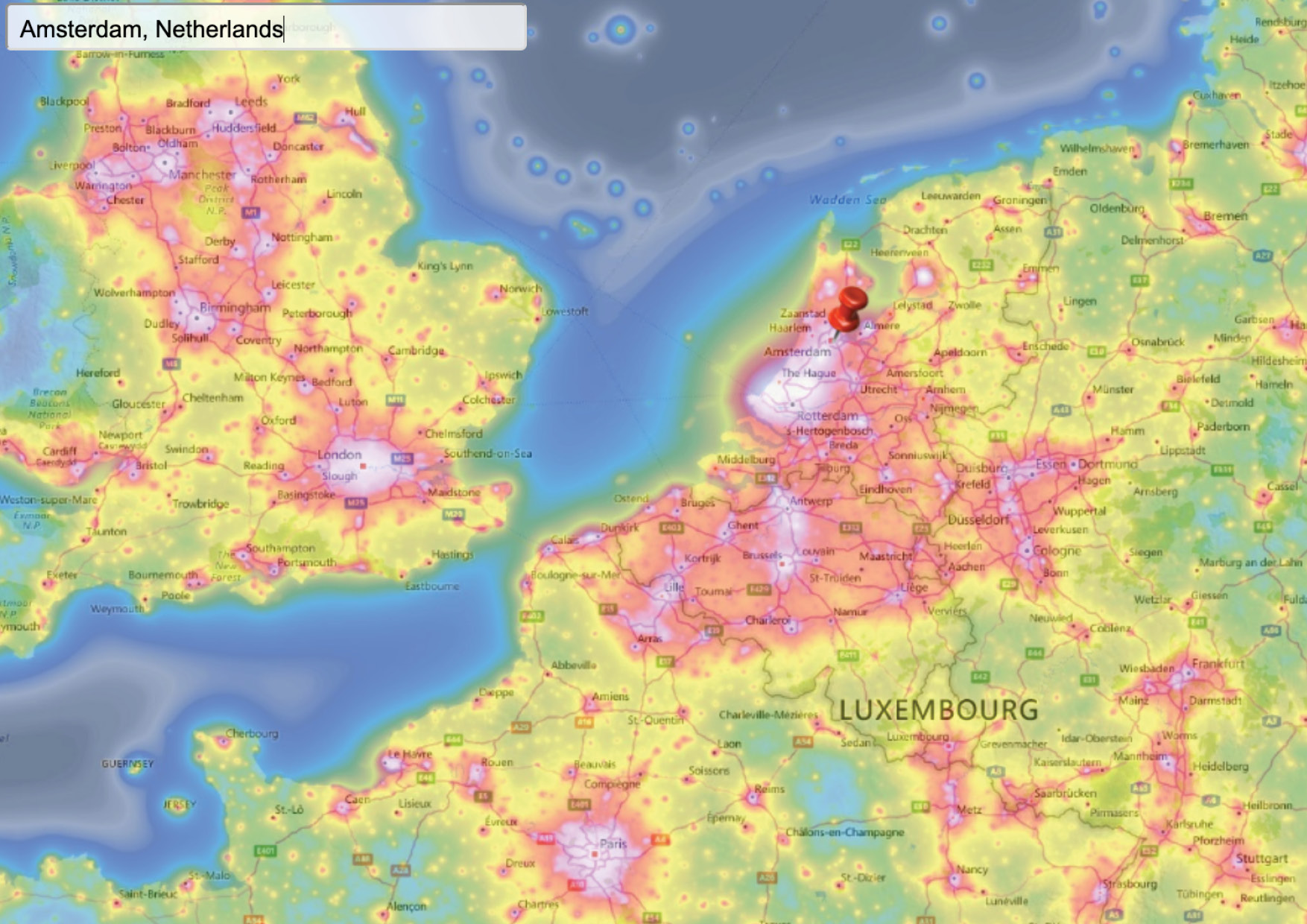
Light pollution in Amsterdam. From the Interactive Light Pollution Map.
But We Need Sleep | Most people need between 7 and 9 hours a sleep at night. Sleep scientist Matthew Walker claims that sleep is more important than diet and exercise. If you need to choose one than choose sleep, he argues. For this project I immersed myself in a sleep training. For several weeks I went to bed at 21.30 hrs. and got up at 6.00 hrs. No snoozing. I removed all electrical devices from my bedroom. I also removed potential ‘wake-up stimuli’, meaning I dismissed my two cats to their own beds in the hallway. I did not consume caffeine, alcohol, daily news and social media. I used my bed solely to sleep. I even obtained a new mattress. I set an alarmclock for ‘cooldown-time’ in the evening, in which I turned off all screens, dimmed the lights and did some reading, leisurely handywork or meditation. At 21.30 hrs. it was lights out and tuck in. In the beginning I felt quite restless on my pillow without podcast or book. But as the weeks progressed I noticed that I fell asleep almost immediately after covering myself with the blankets, and that I did not wake during the night anymore. Try it for yourself: the National Sleep Foundation can tell you what to do.
Save Your Sleep, Save Our Planet | Sleep scientist Matthew Walker believes that people could easily improve their sleep patterns if they just allowed themselves to get one more hour of sleep. One more hour of sleep to make you more healthy and happy. Just imagine that you could also save the planet by giving yourself one extra hour of sleep. Just imagine how much energy would be saved if billions of people would actually take Walker up on his advice. One hour less power-use for all those devices, appliances, cars, plains, heatings, airco’s and lights. One hour less Netflix and browsing on the internet (server farms use incredibly large amounts of energy). One hour less food, drink and product consumption. One hour less economic productivity. In Dutch there is a saying. It is ‘slapend rijk worden’. Becoming rich while sleeping. This is actually neoliberalspeak for ‘profit, interest and increase in value’. Eco-activists should say something similar. ‘Slapend schoon worden’. Becoming clean/fair/beautiful while sleeping. Sleep yourself and the climate into better shape. Isn’t that truly a win-win scenario? Read, Browse, Listen, Watch.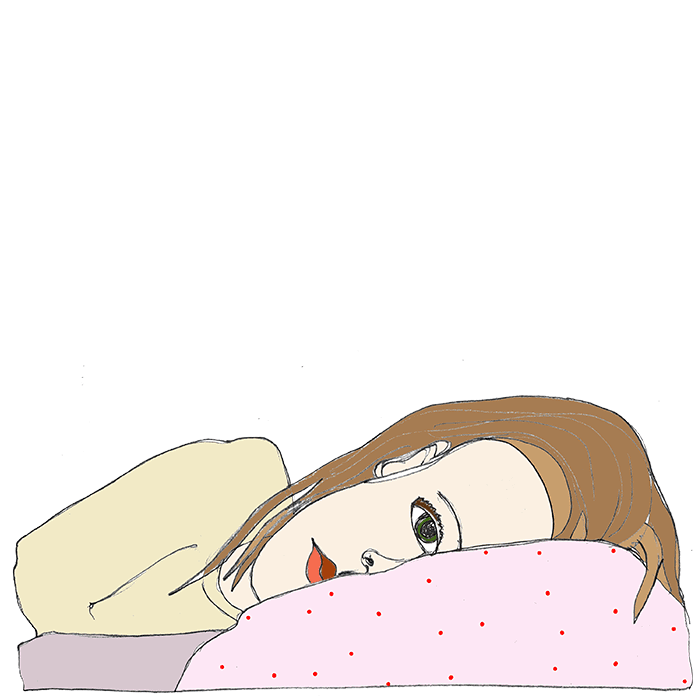
Bed Time Stories
Why we need a new deity for sleep.
In my research on sleep I hardly came across any deities or mythological figures associated with sleep. I was a bit disappointed since I assume sleeping and dreaming are both significant mythological and mythic themes and I had expected more cultural or folklore storytelling about it. Especially since the sleepless part of present-day humanity could certainly do with a cosmic guardian of sleep, like Gotham City needs a Batman.
Morpheus and Little Nemo | I don’t mean fairytale characters like Snow White or Sleeping Beauty. They sleep as victims. I had been wanting to find beings who regard sleep as a power and a gift. There is the Hindu sleep-goddess Nidra, who inspired a recent trend in yoga. Of course there is the famous Morpheus, the Greek god of dreams, and his rather unknown father Hypnos, the god of sleep. (However, just Google ‘Morpheus’ and the first 10 hits give you The Matrix movie franchise.) When I was a young girl I often heard the story of Klaas Vaak, the Dutch Sandman who comes in the evening and sprinkles sand in your eyes to make you sleep. There are thousands of children’s books with bedtime stories about sleep. I need to conclude that it is mainly left up to the writers of children’s stories and comic artists to concern themselves with sleep, like Hans Christian Andersen and Winsor McCay of Little Nemo.
Sleep Deity | So I think we, as grown-ups, are in dire need of a contemporary sleep deity. That is, a figure who shows us how sleep enriches and revitalizes us. A mother, really, who makes us feel safe, secure and cherished. Sleeping and dreaming are things to yearn for, not because they make us more ‘productive’ or better ‘performers’, but because they make us feel more alive and humane. I proudly introduce to you The Sleep Warrior, the divinity who is there for you when you go to sleep, anytime, anyplace. She rides a worker bee that softly showers your face with sweet pollen, like fairydust. The worker bee is the Sleep Warrior’s proud familiar. Without bees there would be no blossoms and flowers. And yet, bees are dying in large numbers because of industrial pesticides, toxic waste and global warming. The textile-industry is partly to blame, since it is one of the dirtiest industries in the world. 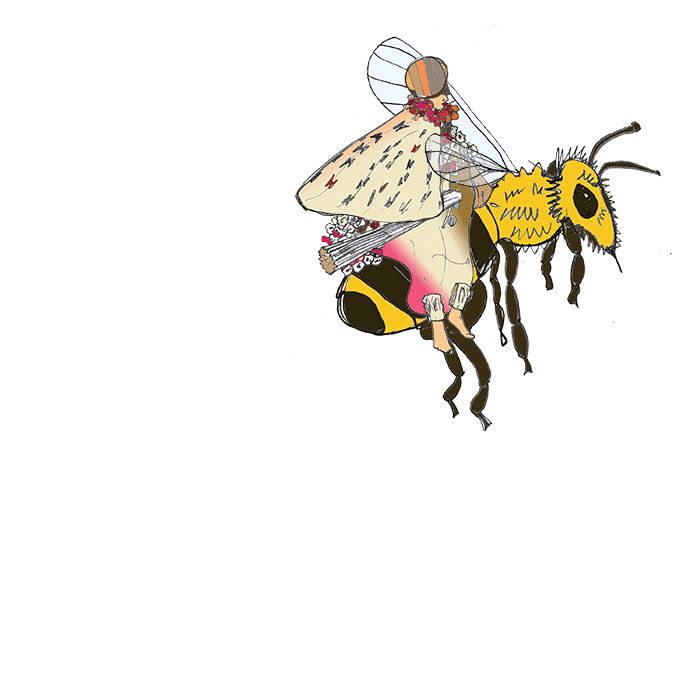
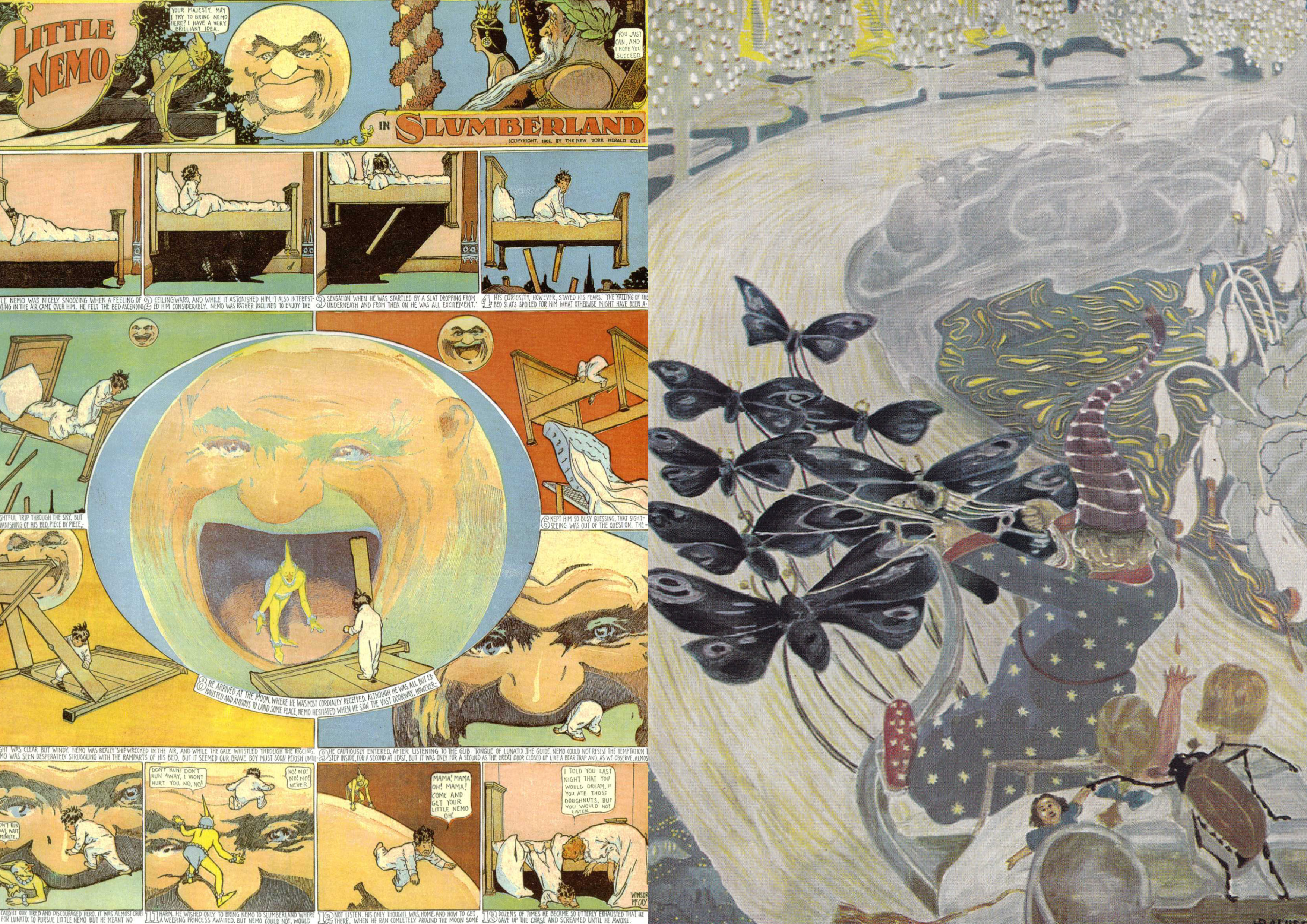
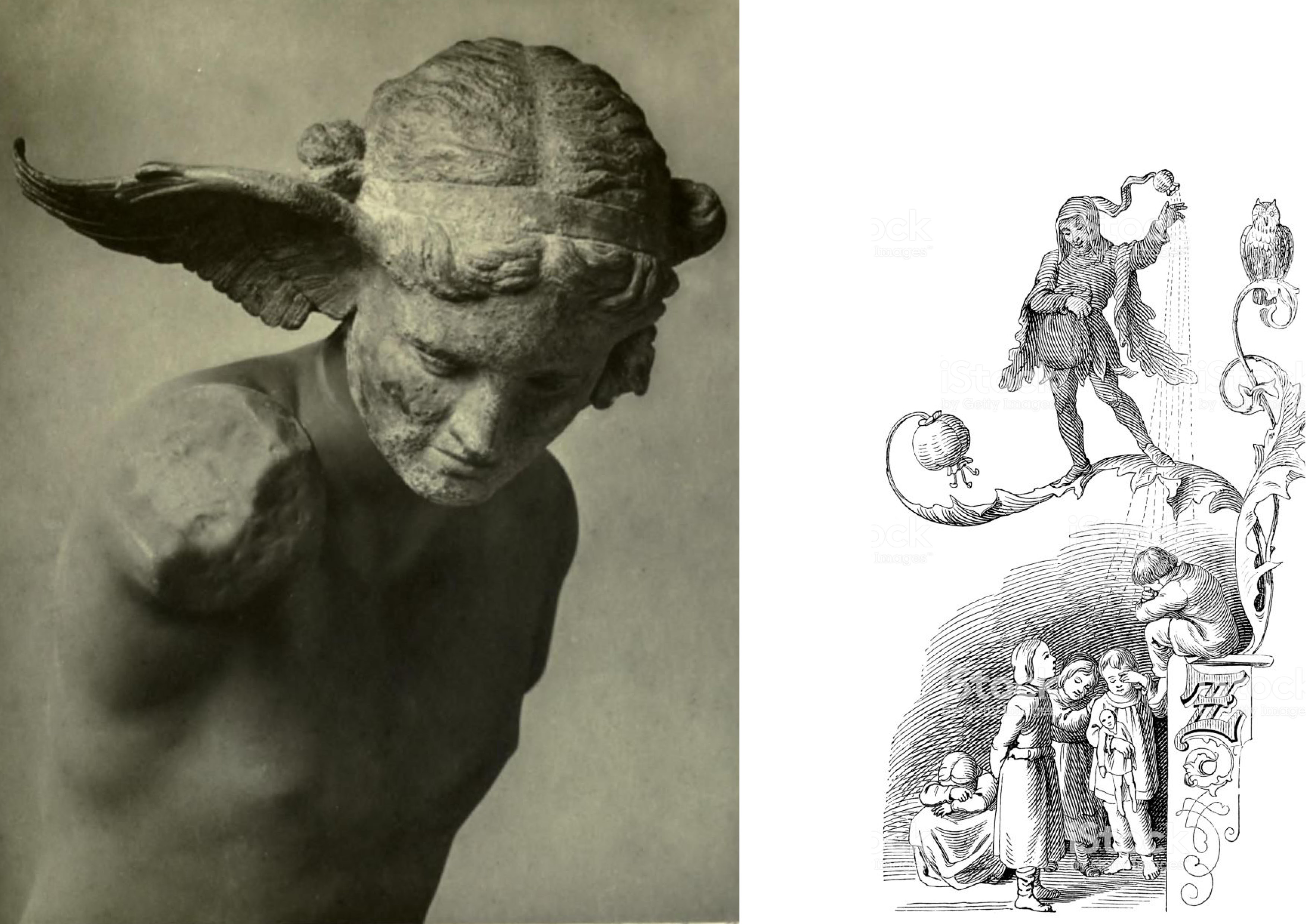
Clockwise: Little Nemo in Slumberland by Winsor McCay. Ole-Luk-Oie the Dream-God by Hans Christan Andersen. The Sandman (in Dutch Klaas Vaak). Hypnos, the Greek god of sleep.
Some Words on Sustainability
Why it is so important and how thrift makes you happier than you think.
While there are organizations that try to question and counter the global pollution and toxic waste of the fast fashion industry (like Fabricademy), the bedware industry is sort of left unregarded while many textiles are produced for this specific section of the trade, with just as much global pollution and toxic waste as a consequence.
Good Quality Materials | I find it remarkable that there is so little innovation in bedware textiles. True, the production of mattresses and pillows is often state of the art, but the actual textiles and bedcovers usually are not. Their manufactering should be studied and improved, I think. I suppose we should produce less textiles but from a better quality and re-use these materials when they are ageing or growing old-fashioned. (Though I did not study this for the sake of the Sleep Warrior-project, I am curious if new weaves could extend the lifespan of bedware textiles.)
Masters of Mending | I think we can learn from the past here. Centuries ago The Netherlands were the global suppliers of high quality cloth or ‘lakenstof’ for sheets, made of natural materials like linen, cotton and wool. These materials could be used for decades on end and had ample second-hand possibilities. Rich Dutch women treasured wooden chests filled with expensive sheets as a status symbol. All Dutch women, rich and poor alike, were masters (mothers) of mending because they were taught as girls. Mending or ‘stoppen’ is actually a very nice way to relax, I think. It is both easy and challenging and quite rewarding.
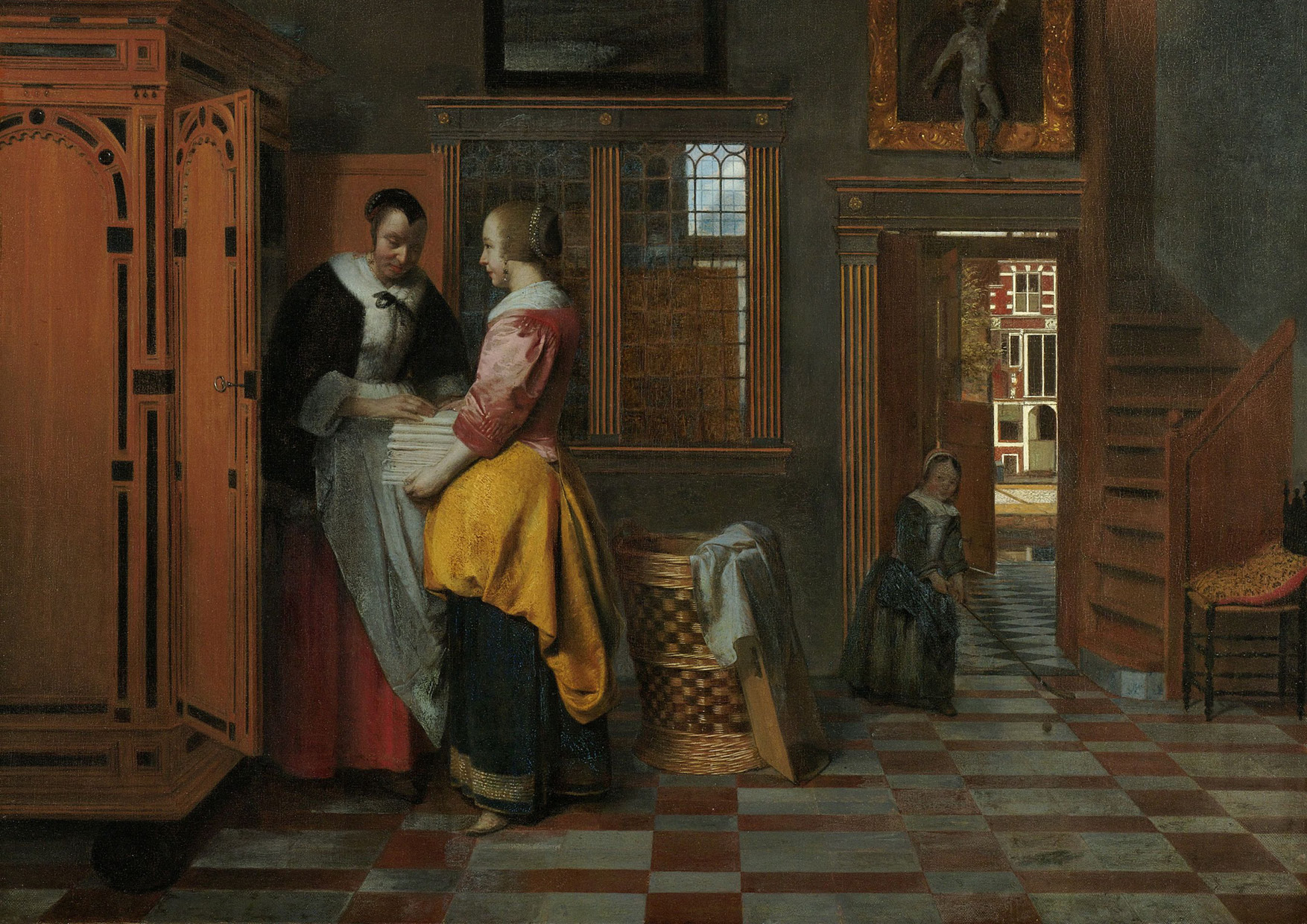
Binnenhuis met vrouwen bij een linnenkast, Pieter de Hooch, 1663. Collection Rijksmuseum Amsterdam.
Natural and Second Hand | For The Sleep Warrior I only used natural and second-hand materials like unwashed cottons, 100% cottons, leftover felt from the market, a piece of foam found in the thrift store and radiator foil I got as a gift from the landlord. I used one button and it is from the button box I inherited from the grandmother of an ex-boyfriend. Thrift is not really considered a virtue in a society that values luxury and the consolation of retail therapy. But take it from me: spending and consuming less makes you really happy. When you only buy things you really need or really love or both – things you will use at least 30 times or 30 years – you do make better choices, thereby increasing the joy of having them in your home with factor X. The money you save makes you a bit more financially secure and this improves a full night’s sleep without worrying. And surely thrift on a large scale could halt global warming. Do you want tips on how to live more sustainable? Read There Is No Planet B, A Handbook for the Make or Break Years.
Zero Waste | Why are sheets so large? Why are duvets so square? Why do beds and mattresses only come in standard sizes, often much too big for the sleeping person? Do we really need a whole room for sleeping? Do we really need to throw away a sheet or bedcover that is worn in the middle? In The Sleep Warrior’s garments I focussed on a more economic use of textiles and zero waste in the design and the cutting. The wearable mattress is, when spread out, more or less the size of a yoga mat. This saves on materials. The sheet is sized according to the person who wears it. This also saves on materials. The leftover fabric I used as filling for the soft bonnet and as wrapping paper for some birthday presents. The modular blanket is made of uniform interlocking modules that did have some waste in the cutting. However these leftover cuts I used for another modular piece. The point is to always consider how leftovers can have a purpose.
Something Old, Nothing New, Something Borrowed, Something Blue | On top of all the many retail products that did not made them happy, more than 10 million people now own a copy of Marie Kondo’s bestseller _The Life-Changing Magic of Tidying Up_. The popularity of Marie Kondo, the Japanese guru of uncluttering, is a sign that people are cultivating a fresh relationship with the things in their intimate surroundings. It is not new possessions they desire. In Kondo’s view (and also my own) people rather crave carefully chosen, curated and well-organized stuff they probably already have had for a long time. For one, I love things I have had for years. I still use the duvet I got when I was eight and I am actually looking forward to mending it (I noticed that is starting to wear thin around the edges after forty years of daily duty). This duvet has in fact become a part of ‘me’. I think we should treasure old things and perhaps borrow from friends, or exchange, to sometimes have something ‘new’ in the house.
Keep, Mend, Repair, Re-Use | Bedware fabrics wear out, partly because the textiles need to be washed regularly on a high temperature (60ºC) to remove dust mites. It is wise to spend a bit more money on bedware textiles of good quality because these last for years if not decades. There are traditional embroidery techniques for mending sheets when they are worn or torn. Old sheets of a good quality cloth can be re-used, for instance in patchwork duvet covers and quilts or made into smaller sheets for children. They can be turned into tableware (napkins) or kitchen textiles. Or turned into rag rugs for the bathroom and picnics in the park. Finally they can serve as cleaning cloths or diapers when there is nothing else left to salvage from them. In short: carefully choose your things, consciously use your things, keep your things well maintained and love your things forever. 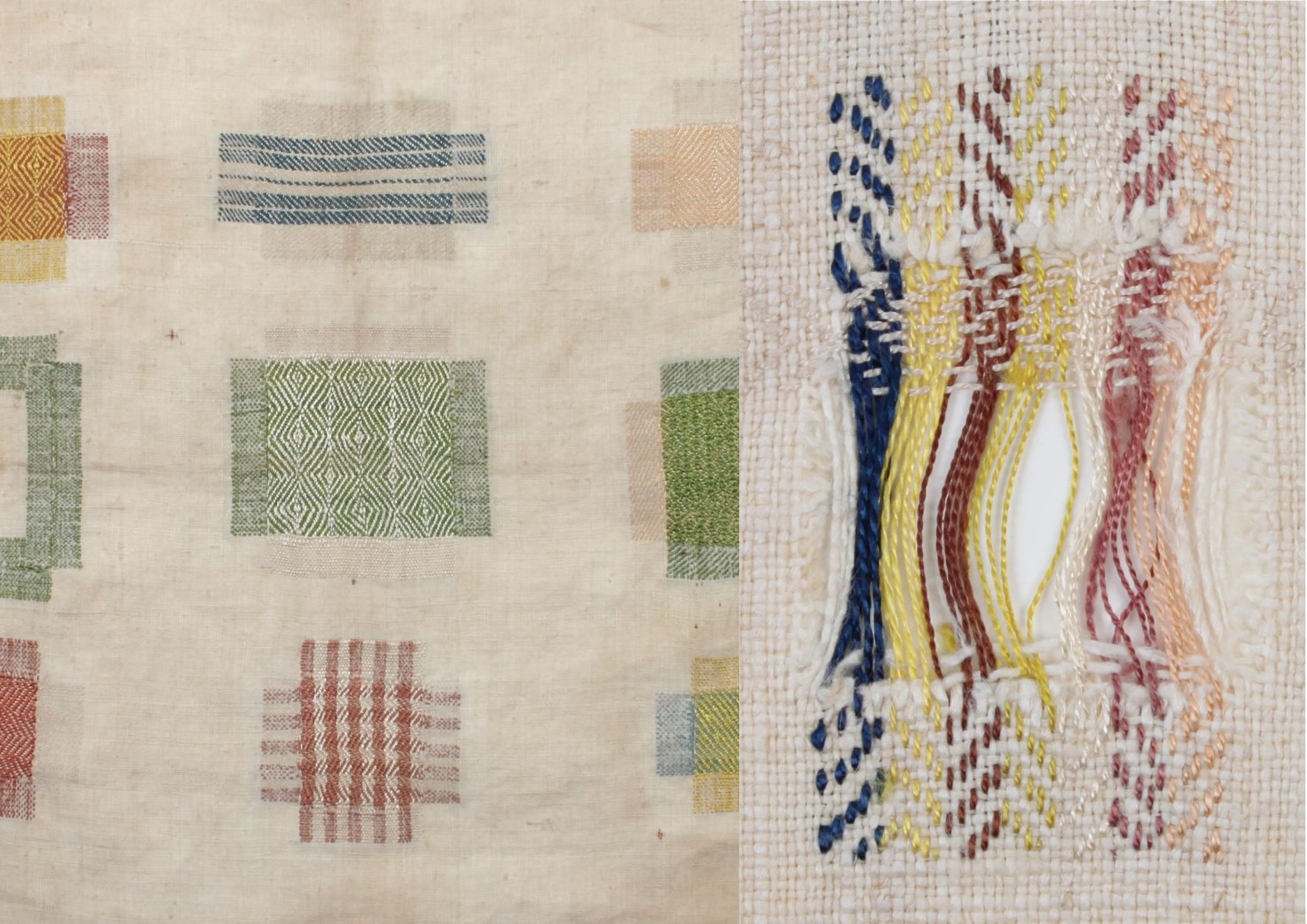 Mending techniques learned by Dutch girls in earlier centuries.
Mending techniques learned by Dutch girls in earlier centuries.
